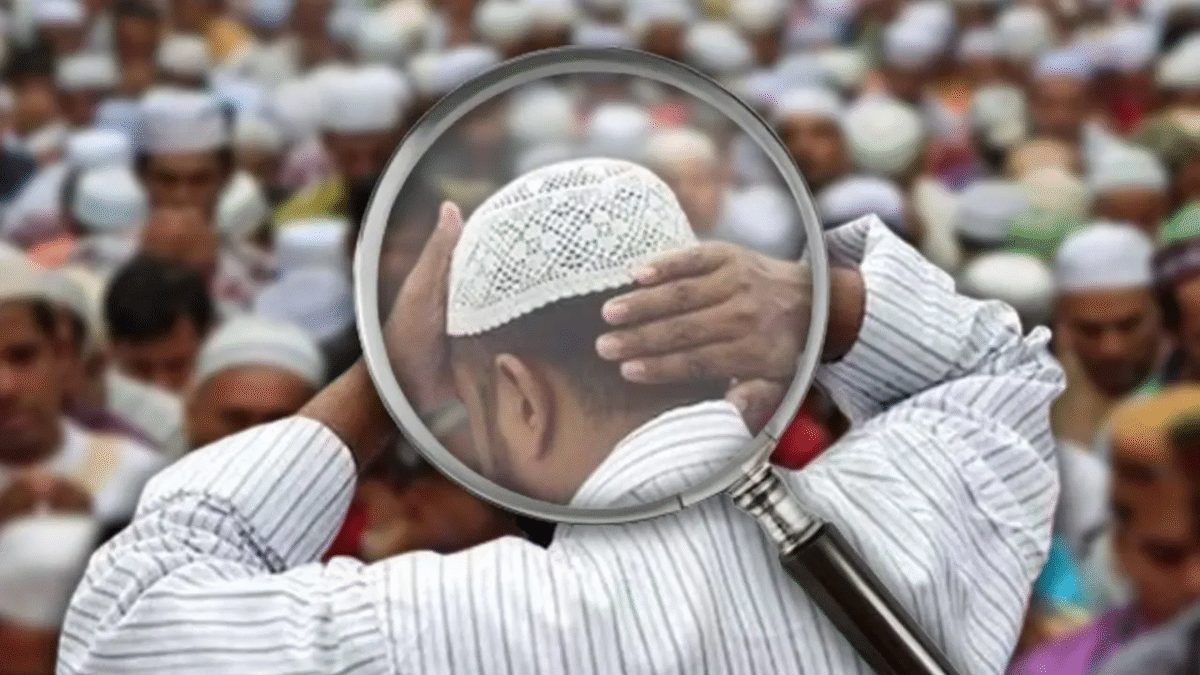Caste Census: Caste census will be held in the country for the first time after India’s independence. The Modi government has also approved the caste census through the cabinet. Thus the castes of the Muslim community will be counted with Hindus. There will be a column of caste along with religion in the census questionnaire. In Bihar and Telangana, figures were collected on the castes of Hindus as well as Muslims in caste surveys. In such a situation, if caste census is conducted at the national level, will the castes of both Hindus and Muslims be calculated? It will be important to see this.
At the national level, the Modi government has decided to conduct caste census. Therefore, its political influence will not only have on Hindu upper caste Brahmins, Kshatriyas, Bhumihars and Koyasthas, but also on upper caste Muslims like Sheikhs, Syeds and Pathans. The main reason for this is that the nature of reservation can change after caste census.
Muslim community divided into three groups
The castes of the Muslim community are divided into three major sections and hundreds of fraternities. The upper class Muslims are called Ashraf, including Syed, Sheikh, Turk, Mughal, Pathan, Rangad, Kayastha Muslims, Muslim Rajputs and Tyagi Muslims. The backward classes of Muslims are called Pasmanda Muslims. This includes OBC castes like Ansari, Qureshi, Mansuri, Salmani, Gujjar, Gaddi, Ghosi, Shimpi, Manihar, Kunjra, Teli and Saifi. Then the most backward Muslims are called Azlal, including washer, cleaning staff, Abbasi, Bhatiara, Nat, Halalkhor, Safai Karmchak, Bhangi, Bakko, Comple, Bhat, Duffli, Pamaria, Nalland and Fishermen. There is no Dalit caste among Muslims.
Muslim castes will be counted like Hindus
Like Hindus, there will be a census of various castes in Muslims. After the implementation of the recommendations of the Mandal Commission, the upper class and backward castes emerged among the Muslims. Like Hindus, there is no authentic figure of Muslim OBCs. A large number of Muslims are OBC (Pasmanda), which are included in the state and central backward class list. In all census since independence, Muslims have been counted on the basis of religion. The reason for this is that caste census is not done in the country.
The caste census in the country will not only know the number of castes. With this, their socio-economic and educational status will also be known. This shows how many castes the Muslim community is divided. It will also show how many upper class Muslims are there and how much is the population of Pasmanda Muslims. Prime Minister Modi’s focus was on attracting Pasmanda Muslims falling in the OBC category. In this way the correct figure of OBC Muslims will be revealed to the public.
Meanwhile, it is believed that Pasmanda Muslims have a population of 80 to 85 percent. In such a situation, it will be clear from the caste census that the entire Muslim society is not backward, but a pasmand class among Muslims which is 80-85 percent of the total Muslims, but their development or progress has not been possible. This largely matches the 1881 census, stating that only 19 percent of Muslims in India were from upper caste, while 81 percent were from low caste.
Syed-Pathan in favor of Thakur-Brahmin
Pasmanda is said to have about 85 percent of the Muslim Muslim community, while the remaining 15 percent are upper caste Muslims like Syed, Sheikh and Pathan. The upper caste Muslims are socially and economically strong and they dominate all political parties. The Pasmanda community is on social, educational, economic and politically marginalized. It is being said that some upper castes in the Muslim community are getting the benefit of all the comforts in the name of Muslims. The situation of Muslim OBC castes is worse than Hindus. The correct information of this will be revealed by caste census.
After the completion of the process of caste census, there will be a demand to increase the limit of reservation. Just as there is dominance of Brahmins, Thakur and Kayasthas in social, educational and government jobs among Hindus, similarly there is a dominance of Sheikh, Syed and Pathans in the Muslim community. After the communal census, the fight for political supremacy between Muslims can also begin. If Pasmanda Muslims can raise their voice against Ashraf Muslims, then its effect will be felt from reservation to political field.
The reservation will be applicable up to 50% of the limit.
The first result of caste census will come on the 50 percent reservation limit. The Supreme Court has fixed the limit of reservation 50 percent. When the recommendations of the Mandal Commission were implemented, a provision of 27 percent reservation for OBCs was made, but the real figures will be with the government after caste census. OBC castes can demand reservation based on their population. Their population is taken into consideration while giving reservation to SC-ST, but this is not the case of OBC reservation.
If the limit of reservation is increased, the concerns of Hindu castes like Brahmin, Thakur and Kayastha will increase and Muslims will also increase the concerns of upper castes like Sheikh, Pathan, Syed and Rangad. When the recommendations of the Mandal Commission were implemented, the Hindu upper castes as well as Muslim Sheikh, Pathan and Syed also stood in protest. In such a situation, if there is talk of increasing the limit of reservation after caste census, then even the upper caste Muslims can come down against it. The Muslim community is divided into three classes-Ashraf, Pasmanda and Azlal, which will be affected separately by this census.
